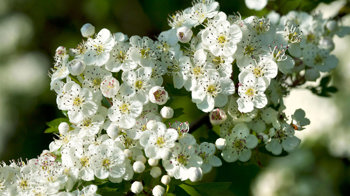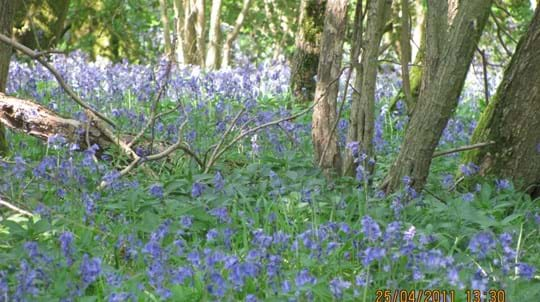
Archers Wood
Sawtry

Woodland Trust wood
18.61 ha (45.99 acres)
TL173810
Explorer 227
OS Landranger 142
Archers Wood is one of a cluster of ancient woodlands in the area. Set in an agricultural landscape, it is an oasis for wildlife.
Wander among the ash, oak and field maple and you may come across a shy deer or a curious fox. There’s plenty of birdlife too. Listen for the distinctive drumming of great spotted woodpeckers and watch out for graceful red kites wheeling overhead.
Features
- Parking nearby
- Public access
- Autumn colour
- Spring flowers
- Broadleaved woodland
How to get to Archers Wood
Covering 18.6 hectares (46 acres), Archers Wood is positioned close to the village of Sawtry, just off junction 15 of the A1 between Huntingdon and Peterborough.
It is not far from Aversley Wood, also owned by the Woodland Trust.
From the north, leave the A1 at junction 15. Follow Old North Road, taking the second exit at the first roundabout, and the first exit at the second and third roundabouts. At the next roundabout, take the third exit, signposted Coppingford, which crosses the motorway, and continue until you see the wood on the left.
From the south, leave the A1 at junction 15. At the roundabout take the first exit, and continue along Toll Bar Way, then turn right at the T-junction, signposted Coppingford. Continue until you see the wood on the left.
The nearest train stations are Peterborough, 18km (11 miles) from the wood, and Huntingdon, 19km (12 miles) from the wood.
Visit National Rail for more information.
The nearest bus stop is at Cotton Close in the village of Sawtry, around 1.6km (1 mile) from the wood. The 46 bus route to Peterborough stops here.
Visit Traveline for more information.
Facilities and access
Access to Archers Wood is through a squeeze gap from the adjacent road. The wood has an extensive system of paths and rides. These are mainly flat on the north of the site, but more undulating in the south-east due to archaeological earthworks. The wood is steeper on the west side. Paths can be muddy and waterlogged in places, especially during winter.
There is some limited parking for approximately 2-3 cars at the entrance to the wood. Parking is also available in the St Judith’s Lane car park in Sawtry village.
There are no toilets close to the wood, but there are several pubs in Sawtry with toilets that customers can use.
Wildlife and habitats
Animals
From curious foxes to pretty peacock butterflies, Archers Wood attracts a range of wildlife. Keep an eye to the skies to spot a red kite or kestrel, and listen out for the drumming of great spotted woodpeckers.
Trees, plants and fungi
Hollowed and bowed ancient trees are a regular sight in Archers Wood, along with stunning bluebells in the spring and sweet-smelling honeysuckle in the summer.
Habitats
Archers Wood is part of a belt of ancient woodlands, fragments of which date back the last ice age.
About Archers Wood
A hideout for highwaymen
The name ‘Archers Wood’ gives a clue to its violent past. It was a notorious hiding spot used by highwaymen as cover from where they launched surprise attacks. The wood once extended closer to the Roman road of Ermine Street (now the A1), but was cut back to within a bow-shot to protect travellers.

Credit: Sawtry History Society
Archaeology
Medieval earthbanks and ditches within the wood are the remains of 12th-century Sawtry Judith Manor. The manor was built for Countess Judith De Lens, niece of William the Conqueror. In the 14th-century it became one of two Abbey Granges, providing food and livestock for the Abbey and employment for part of the village.
The site, now designated a Scheduled Ancient Monument, was excavated in 1979. Finds included wattle and daub walls, bread ovens and hearths for metal work. There have also been finds of pottery and other small items around the site.
Things to do at Archers Wood
Volunteering
The Peterborough Conservation Volunteers run regular woodland working days at Archers Wood.









































